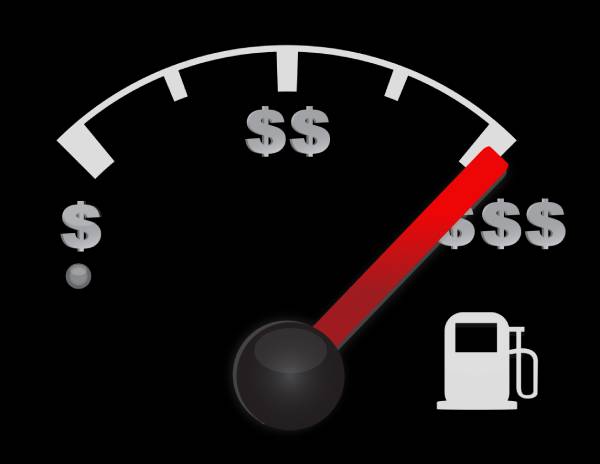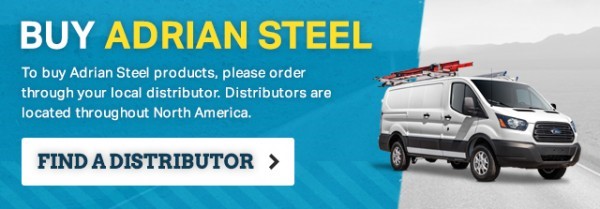Whether you operate your own vehicle or work as a fleet manager, you know how important it is to save money where you can. Fuel is the majority of operating costs, but taking steps to conserve fuel will save you significant money in the long run. For individual drivers, these tips can keep a little extra change in your pocket over the course of the month. When it comes to fleets, it can add up to major increases to your bottom line!
Read on to learn some of our top fuel saving tips for work vehicles and fleets!
Fuel Saving Tips for Your Work Vehicle or Fleet
Avoid Idling to Save Wasted Fuel
Idling for long periods of time is one of the worst things you can do for fuel efficiency. Sitting with a vehicle running for extended periods of time keeps the engine functioning as if you were driving, which does nothing but needlessly burn gas.
Training yourself or your drivers to shut off vehicles when idle for extended periods of time, in heavy, slow moving traffic, or if you’ve pulled off the road to use a cell phone will not only save you money, but also prevent wear-and-tear on the vehicles.
It’s understandable that in extreme weather, idling might feel necessary to keep temperatures comfortable. One way you can avoid the need for idling in these cases is to invest in a partition for your van. This keeps the cab separated from the cargo area, making it much faster to heat up or cool down the cab when you’re ready to move again.
Keep Your Vehicle Weight Down
Every 200lbs of weight in a vehicle reduces fuel efficiency by one mile per gallon, so your vehicles will get much better gas mileage if they’re not weighed down with unnecessary tools and equipment.
Only carry what you absolutely need to get their work done and store any infrequently used tools and equipment at your central location or warehouse.
It may sound like a major pain to load and unload your vehicle frequently just to save on gas, but for fleets, this difference can be significant. Even for a single contractor working out of a van, small changes like these add up.
More importantly, you can simplify the process by incorporating portable bins into your van upfit. These allow you to easily load or unload entire bins of parts or tools from your vehicle, letting you only take along what you need!
Check Your Tire Pressure
According to Car and Driver, one in four drivers has at least one improperly inflated tire. A single underinflated tire can cut fuel economy by 2 percent! Buying tire gauges for yourself or every vehicle in your fleet (and reminding drivers to check them frequently) can increase your total fuel efficiency by 10 percent and increase your tire tread life by as much as 15 percent.
Tire maintenance isn’t just about fuel economy, either. Keeping your tires properly inflated is critical to vehicle safety. Over- or under-inflated tires are a hazard for your vehicle, especially when the roads are bumpy or full of potholes. The time investment to check tire pressure and keep it at the right levels is minimal, while the frustrations of a blown tire can set back your entire day.
Map Out Your Routes
When moving between jobs, most drivers are more concerned with trying to take routes that cover the shortest distances, but that’s not always the most fuel-efficient way to go.
Apps like Waze or built-in GPS systems on your vehicle can provide up-to-date traffic information on which routes are the least congested, which will cut down on fuel usage. With all the tools for mapping and routing, any professional who spends a great deal of time on the road should be doing all they can to optimize their travel.
Avoid Back-and-Forth Driving
Minimizing time spent on the road is an obvious fuel saving tip, but how you go about it can be challenging. Incorporating new technology into your vehicles is a great way to maximize efficiency. That doesn’t just mean picking the clearest routes, but also scheduling the day to avoid back-and-forth travel.
The two best ways to reduce unnecessary backtracking on the road? For on-site contractor visits, try to plan your client visits in a way that leads you to the next closest job. At the end of the day, this can cut your daily mileage down by a quarter to a half if you can avoid driving across town several times!
Likewise, having a van or truck upfit to allow you to carry the whole day’s needs in one trip is critical. Every time you go back to resupply is a trip that could’ve been avoided with proper planning. Of course, it’s not always possible – but doing your best to avoid those trips is one of the best things you can do for gas mileage!
Find the Best Deal on Gas
This seems obvious, but often drivers will stop at the first gas station they find, but however is fuel prices can vary as much as 20 cents per gallon at gas stations that within just a few miles of each other.
Websites such as Gas Buddy will give you an overview of which fueling stations in the area have the cheapest gas prices so you can inform your drivers of where the best options are on a daily basis. Newer apps can also help you find the best gas nearby. Especially now, with gas prices fluctuating to extremes, there’s no reason not to price shop when it’s convenient. Of course, make sure you aren’t going too far out of the way for gas. Wasting a few extra gallons of gas to save a few pennies per gallon is just as bad for the clock as it is for the wallet!
Although fuel costs will always remain high on the list of your fleet expenses, following these easy tips will help you save fuel and money.
Contact Adrian Steel Today!
Our goal is to provide customers with the most innovative upfit packages that maximize commercial vehicle efficiency. We maximize efficiency by producing high quality, useful storage solutions that will save you time and money in the long run. Contact us online or find a local distributor near you!
Let Adrian Steel Help You with Van Drawer & Cabinet Storage Solutions
Get Your Cargo Van Accessories Today!
To learn more about Adrian Steel’s cargo van accessories, give us a call at (800) 677-2726, or find an Adrian Steel distributor in your area.
Connect on Social Media
Facebook | LinkedIn | | YouTube | Pinterest


